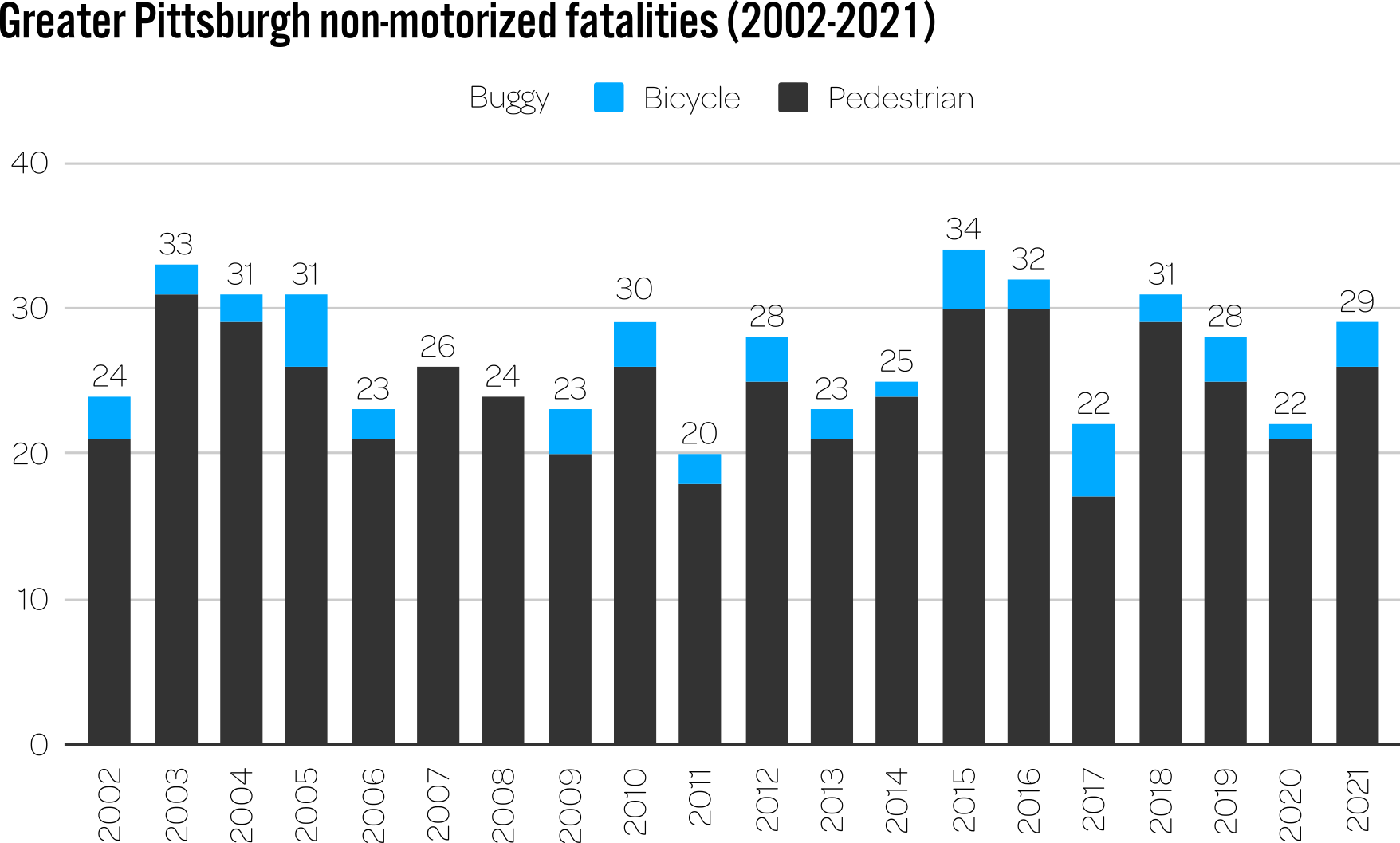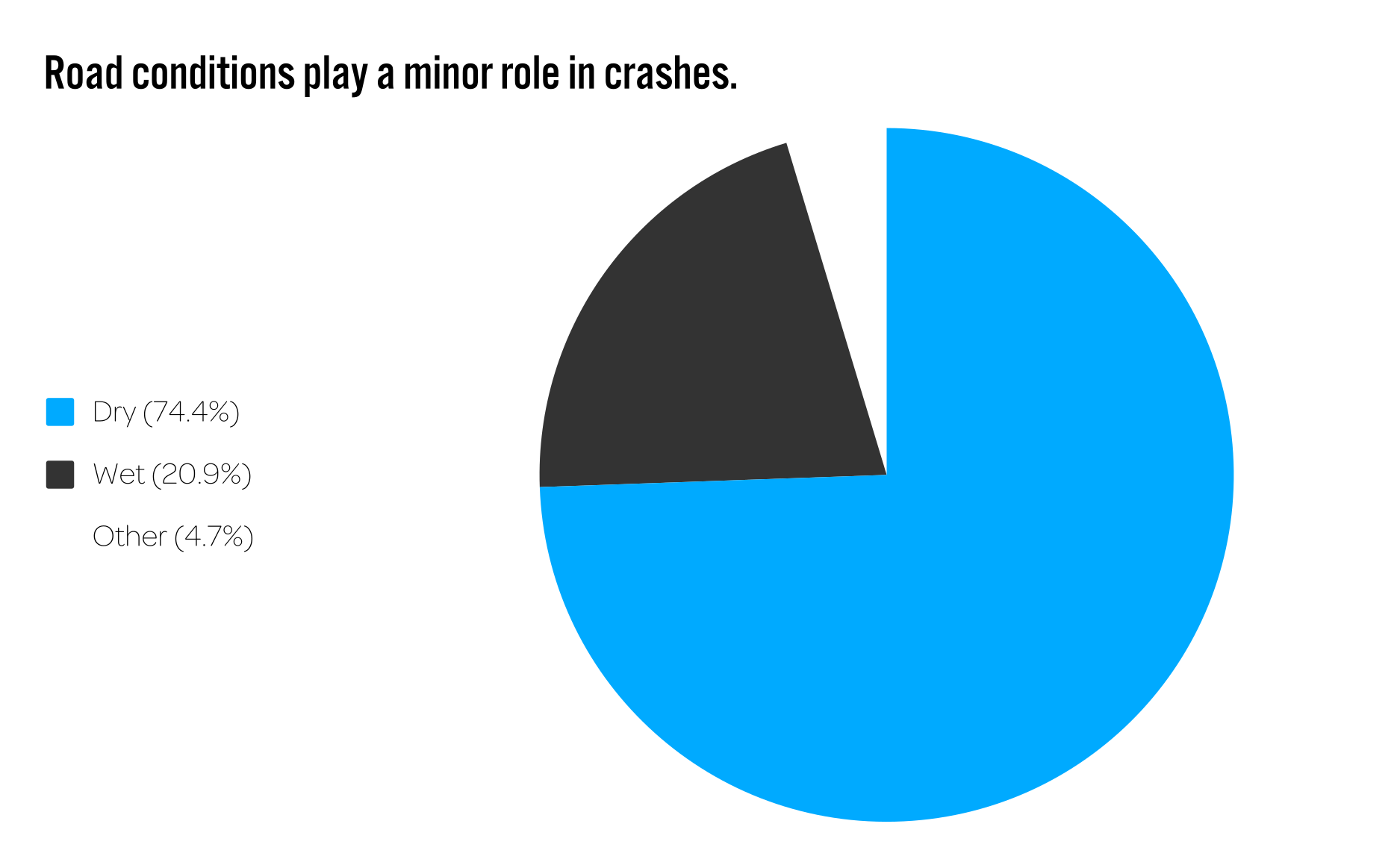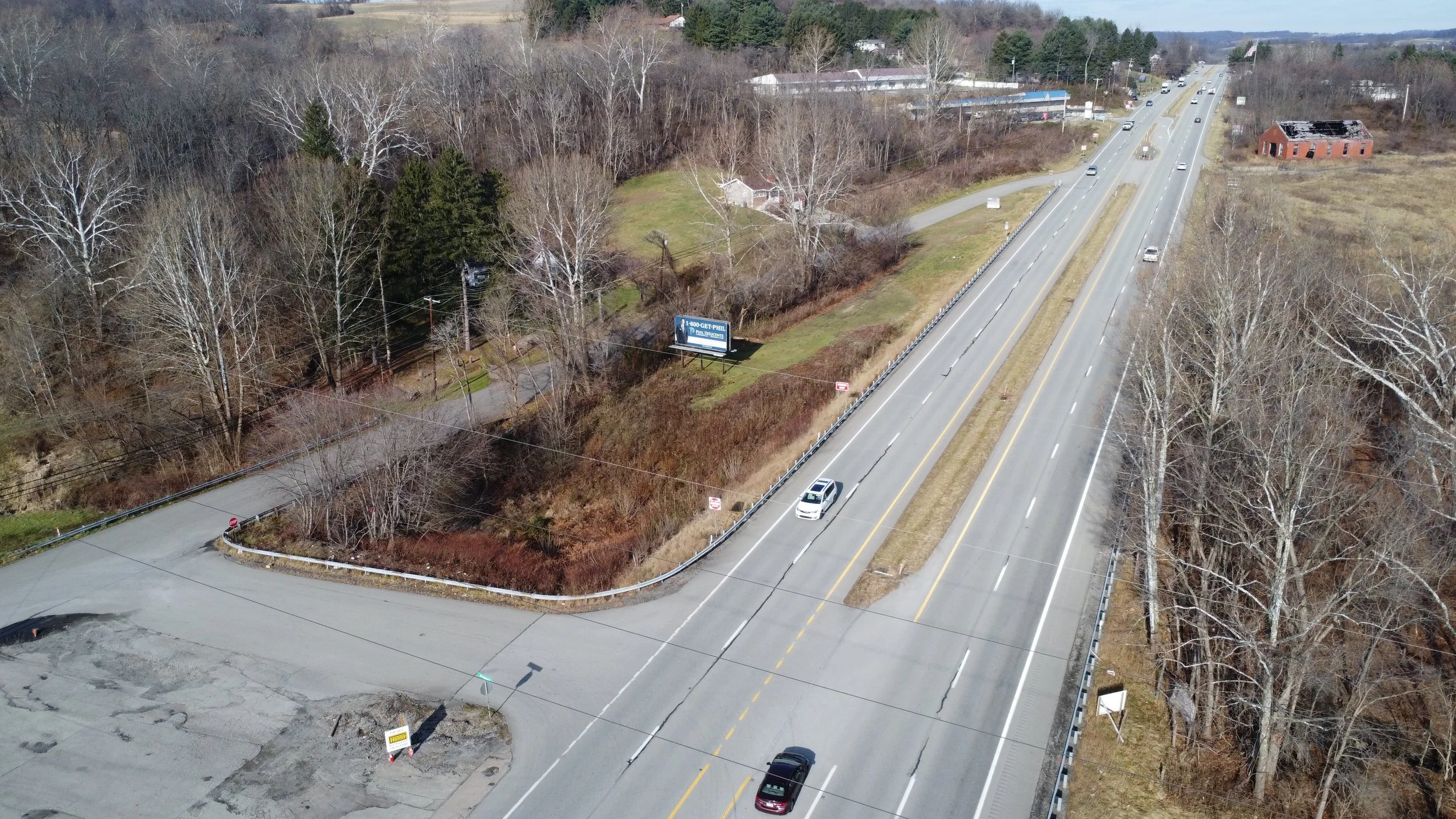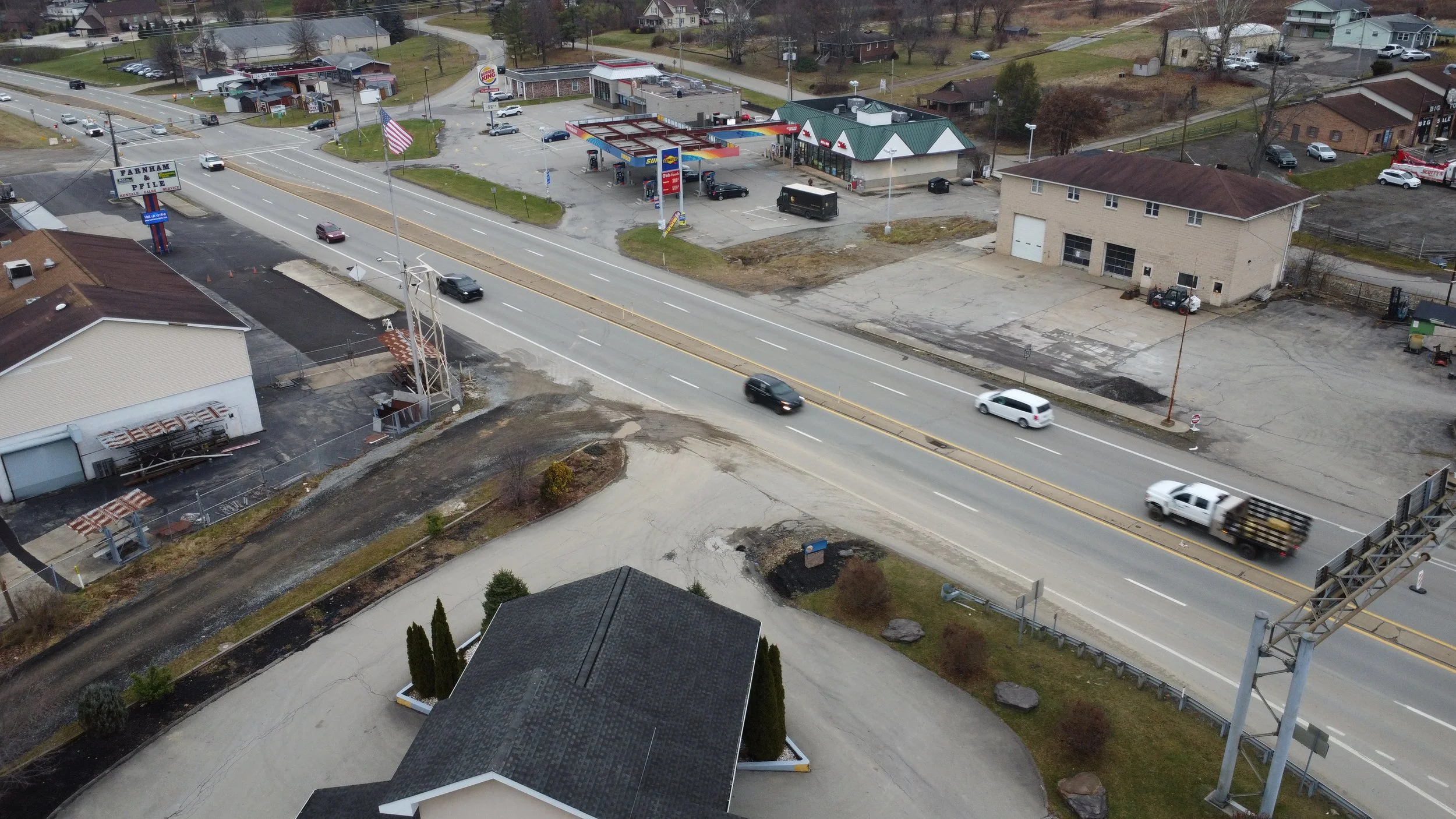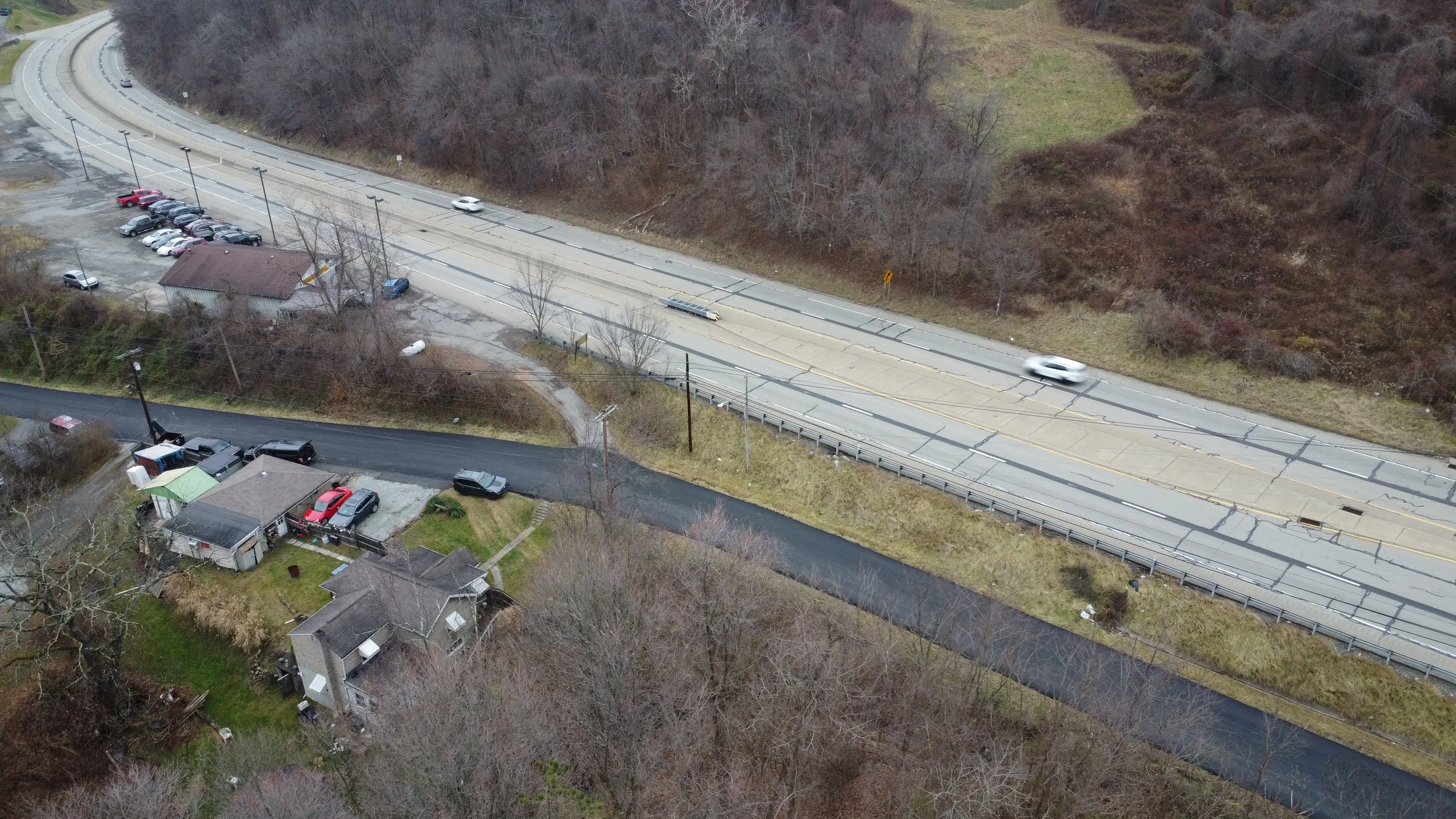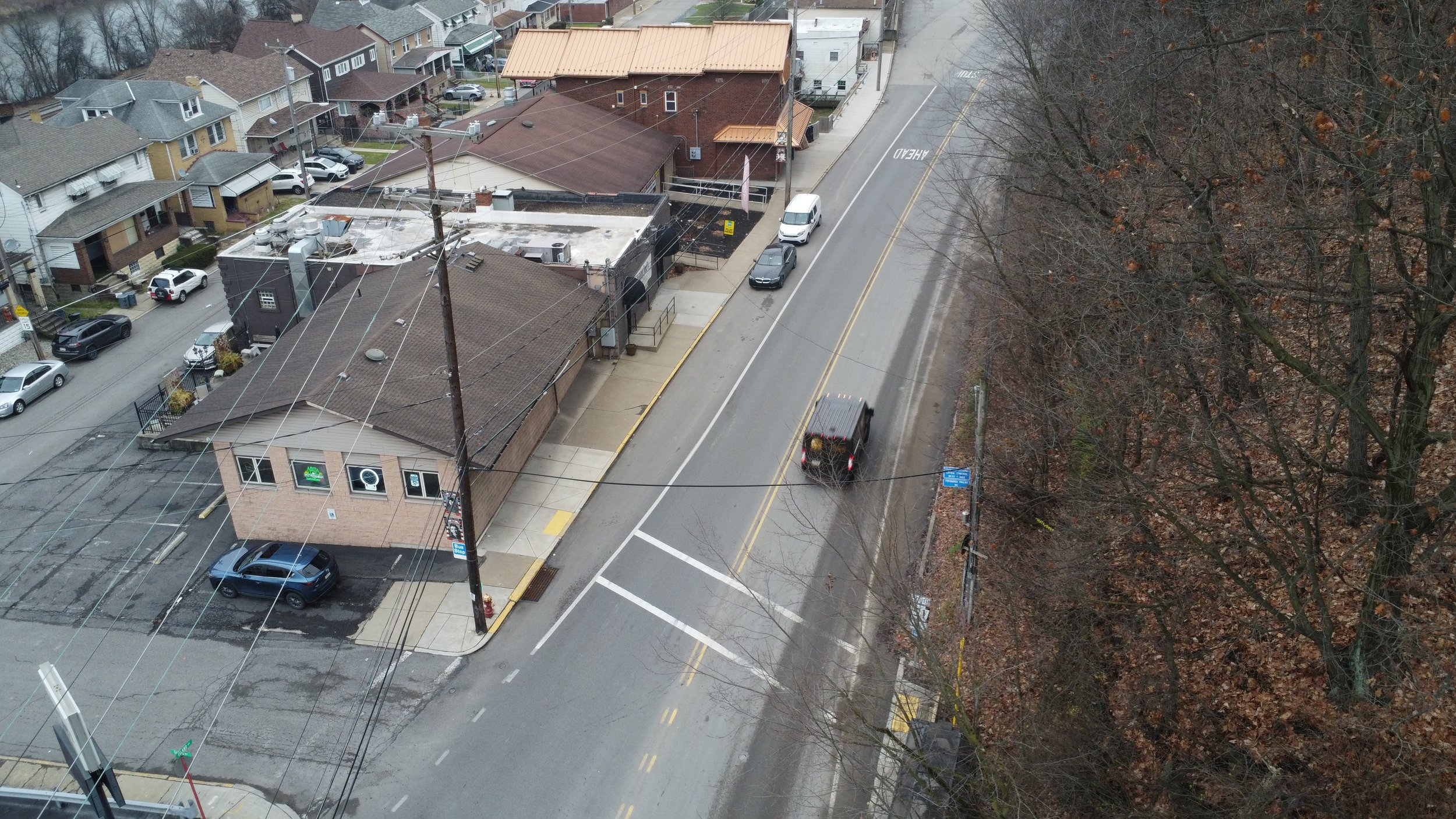Dangerous by Design - Greater Pittsburgh
I. Summary
Greater Pittsburgh is one of the safer metro areas for non-motorists in the United States. It was ranked the sixth safest in Smart Growth America’s Dangerous by Design 2022 report. But while Pittsburgh isn’t getting worse, like many metro areas, it also isn’t getting better. If current trends continue, 24 pedestrians and three bike riders will be killed across Greater Pittsburgh by the end of 2022. We need to reduce this number to zero, and we can do it by changing infrastructure that is dangerous by design.
PennDOT records a number of factors for each car crash, many of which can be found by clicking on individual crashes in the map above. By examining this data, we can identify trends in crashes and how we might address them.
The most dangerous road in the region is PennDOT-owned Pennsylvania Route 51, which saw 20 non-motorist fatalities. Route 51 is one of the longer routes in the region, running all the way from the state line in Beaver County, through Pittsburgh, and terminating in downtown Uniontown. Along that length Route 51 takes on a number of different alignments and land uses, but the greatest number of crashes are concentrated in the South Hills, where Route 51 has a stroad configuration. As we look at the locations where people were killed by drivers on this route, we can see how design decisions contributed to the crash.
Route 51 is designed for speed. While most of the crashes on Route 51 happened in areas with high marked speed limits (between 35 and 55 MPH), the design of the road is virtually the same in the sections of Pittsburgh where it is marked at 25 MPH. Multiple lanes and relatively straight segments (our roads can only get so straight in Pennsylvania) encourage higher speeds.
Crosswalks are inadequate. Some areas along Route 51 have regular crosswalks, but most of the road has a long distance between them. This can encourage crossing mid-block, where most of the crashes on Route 51 are located. In many instances the crosswalks are faded and need to be replaced. Many crossings, such as those needed to get to the bus stops at Lebanon Church Road, don’t seem to have any crosswalk. In addition, the car-oriented retail along the road leads there to be multiple driveways that a pedestrian would have to cross, introducing more conflict.
There are people there wanting to cross the street. Hotels, offices, and high-density residential are located along the road, across from restaurants and stores that people want to get to. This demand for pedestrian travel is unmet by the supply of pedestrian infrastructure. When there isn’t a clear and easy way to get to what you want to get to, people will do their best with an unsafe system, and sometimes that will lead to a deadly crash.
There is no comprehensive sidewalk system. Sidewalks are rare and often will only be present in front of one business, then disappear in front of the next. Some sidewalks dump people into a neighboring business’ driveway. Many intersections will have sidewalks right at the crossing that disappear before they have a chance to lead anywhere. Not providing a safe pedestrian network that connects to safe road crossings, again, encourages mid-block crossing, a dangerous activity on a high-speed road.
II. Recommendations
The Dangerous by Design 2022 report made a number of recommendations for all levels of government. In this section we will describe those recommendations as well as elected officials from Pennsylvania that can be contacted to push these recommendations forward.
Federal
Dangerous by Design recommended actions that can be taken by a number of federal agencies, as well as congress.
USDOT
The U.S. Department of Transportation (USDOT) is in charge of transportation policy at the federal level. Dangerous by Design had a number of recommendations for USDOT:
adopt the position that safety and speed are incompatible goals
stop allowing transportation agencies to claim safety benefits from congestion reduction projects, which typically lead to higher speeds and less safety for non-motorists
do not use “value of time” guidance to allow higher vehicle speeds to be credited as travel time savings
prioritize safety with the $200 billion in discretionary competitive grants that they control from the the Infrastructure Investment and Jobs Act (IIJA)
steer the funding that goes out to states and metropolitan planning organizations to safety
use their bully pulpit to praise the states that are setting strong safety improvement targets and meeting them, and point out the states that are taking federal taxpayers’ money and setting targets for more people to die
USDOT is lead by Secretary of Transportation Pete Buttigieg. They can be contacted by phone at (202) 366-4000, or by mail at
U.S. Department of Transportation
1200 New Jersey Avenue SE
Washington, DC 20590
NHTSA
The National Highway Traffic Safety Administration (NHTSA) is a division of USDOT focused on reducing vehicle-related deaths, historically through regulating car safety standards. Dangerous by Design commends them for including pedestrian safety in their New Car Assessment Program proposed rule, but encourages them to go further:
ensure that vehicle design does not impede direct vision of people in front of the car, such as by having a high grill than can block the view of pedestrians, especially children, in front of trucks or SUVs
incorporate pedestrian survivability into vehicle safety ratings
NHTSA is administered by Ann Carlson. They can be reached by email, by phone at (888) 327-4236, or by mail at
NHTSA Headquarters
1200 New Jersey Avenue SE
West Building
Washington, DC 20590
FHWA
The Federal Highway Administration (FHWA) is a division of USDOT specializing in highway transportation. They are responsible for road design standards, such as the Manual on Uniform Traffic Control Devices (MUTCD). Dangerous by Design recommendations include:
update design standards, like those in the MUTCD, to stop prioritizing vehicle speed over safety
release stronger clarifying enforcement on federal rules like those on the protection of nonmotorized transportation traffic
include the best practices of a Complete Streets approach, including how to build equity, implementation, and other key tenets into their plans
FHWA is administered by Stephanie Pollack. Her office phone number is (202) 366-2240. FHWA can also be contacted by email, by phone at (202) 366-0660, and by mail at
Federal Highway Administration
1200 New Jersey Avenue SE
Washington, DC 20590
Congress
In terms of transportation, congress is responsible for funding grants, authorizing the transportation program, and directing federal agencies. Deadly by Design has recommendations for each of these powers:
fully fund the Healthy Streets Program, the Active Transportation Infrastructure Investment Program, and others like RAISE that support safety improvements
don’t wait five more years until the next transportation authorization is due to make changes to the federal transportation program as a whole to ensure there is no flexibility to undercut or underfund clearly needed safety improvements
direct USDOT and FHWA to release stronger rules and guidance on protecting vulnerable road users
Greater Pittsburgh is currently represented in congress by two senators and six representatives.
Senator Bob Casey
Pittsburgh office phone: (412) 803-7370
Pittsburgh office address: 310 Grant Street, Suite 2415, Pittsburgh, PA 15219
Senator John Fetterman
As of this writing, Senator Fetterman has yet to open his Pittsburgh office. This will be updated as soon as that information changes.
Representatives will be discussed in county and local recommendations.
State
State recommendations fall on state-level elected officials and statewide department personnel. Dangerous by Design recommendations for these groups include:
prioritize safe access to destinations for people walking on streets in developed areas, whether big urban areas or rural villages
work with local land-use authorities to better connect communities and shorten the distances between key destinations
treat walking and biking as important modes for everyday transportation, not merely leisure activities
use every available dollar to fund safety projects like traffic calming, slower road design, and pedestrian infrastructure
The only statewide elected official overseeing transportation is Governor Josh Shapiro. Governor Shapiro’s office can be contacted by email, by phone at (717) 787-2500, and by mail at
Office of the Governor
508 Main Capitol Building
Harrisburg, PA 17120
Transportation policy is managed in Pennsylvania by the Pennsylvania Department of Transportation (PennDOT). PennDOT is lead by Secretary of Transportation Mike Carroll. The PennDOT Central Office can be reached by email, by phone at (717) 787-2838, and by mail at
PA Department of Transportation
Keystone Building
400 North St., Fifth Floor
Harrisburg, PA 17120
Contacts for PennDOT districts will be discussed in county and local recommendations.
Cities and Localities
Recommendations and contacts for cities and localities will be discussed in county and local recommendations.
IV. The most dangerous places to walk in Greater Pittsburgh
Counties
The chart and map above show the average crash rate per 100,000 people over the five-year period from 2017 to 2021 in each of the nine Pennsylvania counties in Greater Pittsburgh. While Allegheny County has by far the most crashes, it also has the most people, and suburban Washington County actually has a higher rate of crashes per population. Every county is below the Dangerous by Design crash rate for the country of 1.8.
What is interesting is the trends over time in each of the counties. The four counties with the highest average crash rates have all gotten worse since 2012-2016, while the five counties with lower average crash rates have all improved in the same time, with Lawrence County cutting its rate by more than half, and Armstrong County nearly doing so as well.
Municipalities
Greater Pittsburgh has many small municipalities, where one crash can skew the numbers such that they don’t represent reality. For instance, little Twilight Borough (population 215 as of the 2020 Census) had one fatal crash in 2018, which bumped up its five-year average per 100k population to a whopping 88.5 (compare that with the national average of 1.8). With that in mind, this analysis only includes those municipalities large enough that a single crash wouldn’t produce a statistical outlier. The magic population number to meet that criteria turned out to be 8,000, which leaves Greater Pittsburgh’s 68 largest municipalities in this analysis.
The chart and map above show the average crash rate per 100,000 people over the five-year period from 2017 to 2021 in the 20 most dangerous municipalities in Greater Pittsburgh. While these municipalities are located throughout the region, there is a concentration of them to the southeast of Pittsburgh. Route 51, the most dangerous route in the region, passes through several of these municipalities.
When we look at the rates of change from five years ago, we can see that the majority of the most dangerous municipalities in the region have gotten worse, with many of them starting from a rate of zero. Pleasant Hills, Jeannette, Aliquippa, Pittsburgh, and Jefferson Hills have shown little change, while North Union Township and McKeesport have actually improved.
While many places in the region have gotten worse, many have also gotten better, and at similar rates. Municipalities that have not improved could look at others that have gotten better and learn from their example.
Additional Analysis
-
Aleppo Township (coming soon)
Aspinwall (coming soon)
Avalon (coming soon)
Baldwin (coming soon)
Bell Acres (coming soon)
Bellevue (coming soon)
Bethel Park (coming soon)
Braddock (coming soon)
Carnegie (coming soon)
Clairton (coming soon)
Collier Township (coming soon)
Crafton (coming soon)
Duquesne (coming soon)
Fawn Township (coming soon)
Forest Hills (coming soon)
Franklin Park (coming soon)
Harmar Township (coming soon)
Homestead (coming soon)
Indiana Township (coming soon)
Jefferson Hills (coming soon)
Leetsdale (coming soon)
McCandless Township (coming soon)
McKees Rocks (coming soon)
McKeesport (coming soon)
Millvale (coming soon)
Monroeville (coming soon)
Moon Township (coming soon)
Mount Oliver (coming soon)
North Fayette Township (coming soon)
North Versailles Township (coming soon)
Ohio Township (coming soon)
Penn Hills Township (coming soon)
Pine Township (coming soon)
Pittsburgh (coming soon)
Pleasant Hills (coming soon)
Plum (coming soon)
Richland Township (coming soon)
Robinson Township (coming soon)
Ross Township (coming soon)
Scott Township (coming soon)
Sewickley Hills (coming soon)
Shaler Township (coming soon)
South Park Township (coming soon)
Swissvale (coming soon)
Tarentum (coming soon)
Turtle Creek (coming soon)
West Mifflin (coming soon)
Wilkinsburg (coming soon)
Wilmerding (coming soon)
-
Armstrong County (coming soon)
Apollo (coming soon)
Cowanshannock Township (coming soon)
Dayton (coming soon)
Kiskiminetas Township (coming soon)
Manor Township (coming soon)
Plumcreek Township (coming soon)
Rayburn Township (coming soon)
Worthington (coming soon)
-
Beaver County (coming soon)
Aliquippa (coming soon)
Beaver (coming soon)
Beaver Falls (coming soon)
Big Beaver (coming soon)
Chippewa Township (coming soon)
Freedom (coming soon)
Hopewell Township (coming soon)
Industry (coming soon)
North Sewickley Township (coming soon)
-
Butler County (coming soon)
Adams Township (coming soon)
Butler (coming soon)
Butler Township (coming soon)
Center Township (coming soon)
Concord Township (coming soon)
Cranberry Township (coming soon)
Harrisville (coming soon)
Lancaster Township (coming soon)
Muddy Creek Township (coming soon)
Prospect (coming soon)
Summit Township (coming soon)
-
Fayette County (coming soon)
Connellsville (coming soon)
Connellsville Township (coming soon)
Dunbar Township (coming soon)
Georges Township (coming soon)
Jefferson Township (coming soon)
Menallen Township (coming soon)
North Union Township (coming soon)
Uniontown (coming soon)
-
Indiana County (coming soon)
Brush Valley Township (coming soon)
Burrell Township (coming soon)
Cherryhill Township (coming soon)
Indiana (coming soon)
Rayne Township (coming soon)
Shelocta (coming soon)
-
Lawrence County (coming soon)
Ellwood City (coming soon)
Mahoning Township (coming soon)
Neshannock Township (coming soon)
New Castle (coming soon)
Shenango Township (coming soon)
Union Township (coming soon)
-
Washington County (coming soon)
Amwell Township (coming soon)
Beallsville (coming soon)
Buffalo Township (coming soon)
California (coming soon)
Canton Township (coming soon)
Charleroi (coming soon)
Chartiers Township (coming soon)
Ellsworth (coming soon)
Fallowfield Township (coming soon)
Finleyville (coming soon)
Hanover Township (coming soon)
North Franklin Township (coming soon)
North Strabane Township (coming soon)
Peters Township (coming soon)
South Strabane Township (coming soon)
Twilight (coming soon)
Washington (coming soon)
-
Westmoreland County (coming soon)
Derry Township (coming soon)
East Huntingdon Township (coming soon)
Greensburg (coming soon)
Hempfield Township (coming soon)
Jeannette (coming soon)
Ligonier (coming soon)
Ligonier Township (coming soon)
Lower Burrell (coming soon)
Mount Pleasant Township (coming soon)
Murrysville (coming soon)
New Stanton (coming soon)
North Belle Vernon (coming soon)
Penn Township (coming soon)
Rostraver Township (coming soon)
Sewickley Township (coming soon)
South Greensburg (coming soon)
South Huntingdon Township (coming soon)
Unity Township (coming soon)
Upper Burrell Township (coming soon)
Washington Township (coming soon)


